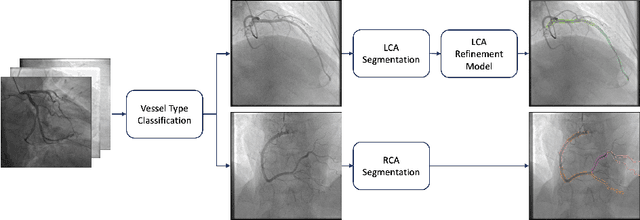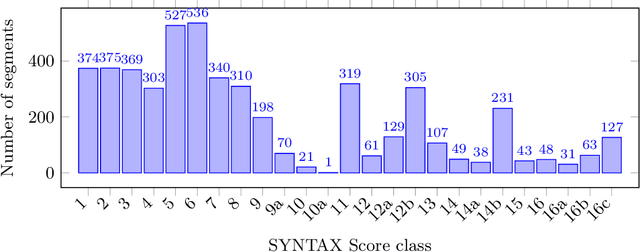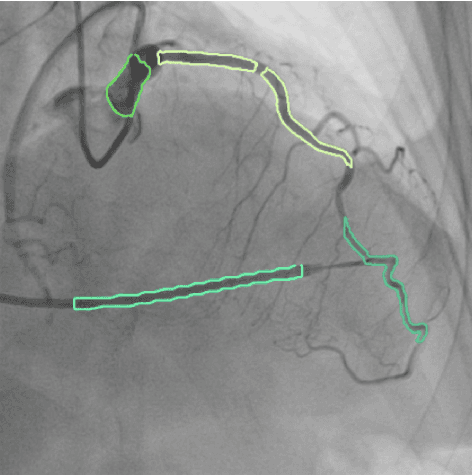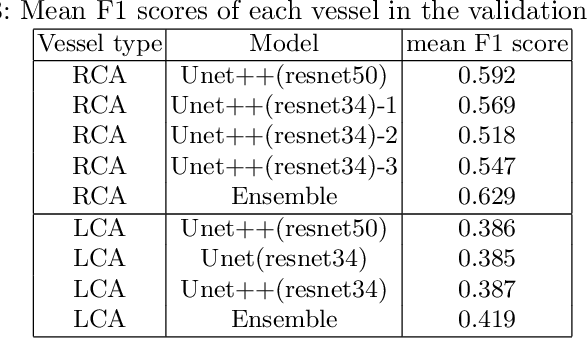Yong-Hee Lee
MPSeg : Multi-Phase strategy for coronary artery Segmentation
Nov 17, 2023



Abstract:Accurate segmentation of coronary arteries is a pivotal process in assessing cardiovascular diseases. However, the intricate structure of the cardiovascular system presents significant challenges for automatic segmentation, especially when utilizing methodologies like the SYNTAX Score, which relies extensively on detailed structural information for precise risk stratification. To address these difficulties and cater to this need, we present MPSeg, an innovative multi-phase strategy designed for coronary artery segmentation. Our approach specifically accommodates these structural complexities and adheres to the principles of the SYNTAX Score. Initially, our method segregates vessels into two categories based on their unique morphological characteristics: Left Coronary Artery (LCA) and Right Coronary Artery (RCA). Specialized ensemble models are then deployed for each category to execute the challenging segmentation task. Due to LCA's higher complexity over RCA, a refinement model is utilized to scrutinize and correct initial class predictions on segmented areas. Notably, our approach demonstrated exceptional effectiveness when evaluated in the Automatic Region-based Coronary Artery Disease diagnostics using x-ray angiography imagEs (ARCADE) Segmentation Detection Algorithm challenge at MICCAI 2023.
SSASS: Semi-Supervised Approach for Stenosis Segmentation
Nov 17, 2023Abstract:Coronary artery stenosis is a critical health risk, and its precise identification in Coronary Angiography (CAG) can significantly aid medical practitioners in accurately evaluating the severity of a patient's condition. The complexity of coronary artery structures combined with the inherent noise in X-ray images poses a considerable challenge to this task. To tackle these obstacles, we introduce a semi-supervised approach for cardiovascular stenosis segmentation. Our strategy begins with data augmentation, specifically tailored to replicate the structural characteristics of coronary arteries. We then apply a pseudo-label-based semi-supervised learning technique that leverages the data generated through our augmentation process. Impressively, our approach demonstrated an exceptional performance in the Automatic Region-based Coronary Artery Disease diagnostics using x-ray angiography imagEs (ARCADE) Stenosis Detection Algorithm challenge by utilizing a single model instead of relying on an ensemble of multiple models. This success emphasizes our method's capability and efficiency in providing an automated solution for accurately assessing stenosis severity from medical imaging data.
 Add to Chrome
Add to Chrome Add to Firefox
Add to Firefox Add to Edge
Add to Edge